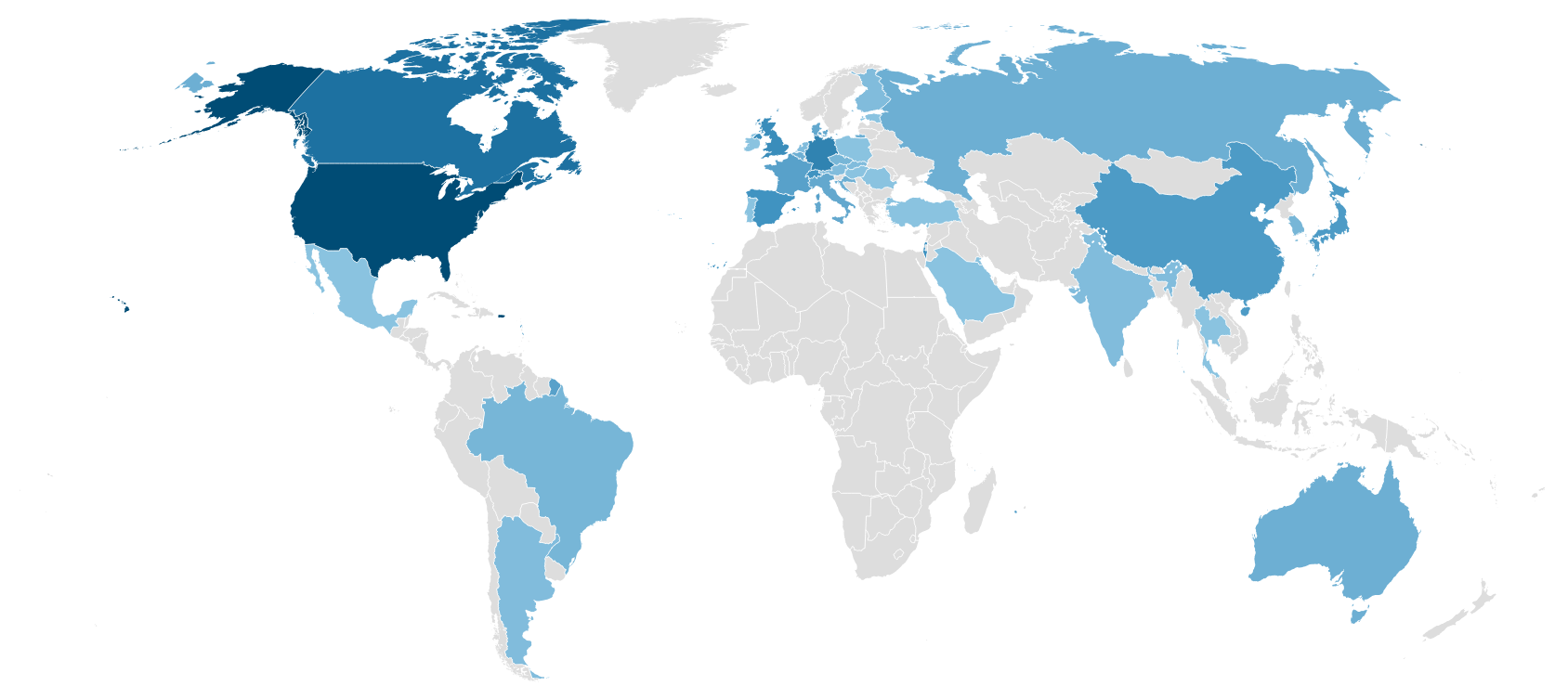2024 Annual Report
Donnelly Centre for Cellular and Biomolecular Research

Donnelly Centre for Cellular and Biomolecular Research

Last year was a remarkable one for the Donnelly Centre for Cellular and Biomolecular Research, and I am excited to share the highlights in our 2024 annual report.
Since its founding in 2005, the Donnelly Centre has been at the forefront of biomedical research. A recent shift towards integrating AI and machine learning into our work has expanded the possibilities of discovery. Our researchers have not only adopted these technologies but have also refined and leveraged them to accelerate breakthroughs in health and medicine.
To meet the growing demand for expertise in emerging fields, the Donnelly Centre welcomed three new faculty members in 2024: Assistant Professors Shu Wang, John Morris, and Aleksandrina Goeva. Their expertise in data analysis, machine learning and computational biology will drive further progress in these critical areas.
Our faculty’s research output last year spanned high-priority areas, including bioengineering, computational biology and AI, discovery genomics and stem cell and regenerative medicine. In total, we published more than 160 studies, with approximately 18% appearing in high-impact journals and 26% receiving significant media coverage. Faculty members collaborated with researchers worldwide—including in the United States, Europe, China, Japan, and Australia—to tackle the most pressing questions in biomedical research.
The collaborative and interdisciplinary nature of the Donnelly Centre is reflected in our top research stories of 2024, which covered topics ranging from neurogenesis to a molecular atlas of the human brain to the use of machine learning in the search for novel human viruses.
Last year, our faculty secured nearly $30M in funding, a testament to the impact and value of our research—and an impressive achievement for a team of 34 faculty members.
Beyond our faculty, the Donnelly Centre is home to 80 research and administrative staff, nearly 100 postdoctoral fellows and research associates, and around 200 graduate students. We also provided over 90 undergraduate students with hands-on research experience in 2024.
Our community remains committed to cross-disciplinary collaboration and technological innovation to advance health and medicine. I extend my gratitude to all members of our community and to those who support our work as we continue to push the boundaries of biomedical research.
Stéphane Angers
Director and Professor, Donnelly Centre
| Research and Admin Staff | Principal Investigators | Postdoctoral Fellows | Research Associates | Graduate Students | Undergraduate Students |
|---|---|---|---|---|---|
| 80 | 35 | 57 | 37 | 217 | 93 |
| Biochemistry | Cells & Systems Biology | Chemical Engineering & Applied Chemistry | Chemistry | Computer Science | Institute of Biomedical Engineering | Institute of Medical Science | Medical Biophysics | Molecular Genetics | Pharmaceutical Sciences | Pharmacology & Toxicology | Physics | Physiology |
|---|---|---|---|---|---|---|---|---|---|---|---|---|
| 17 | 1 | 11 | 5 | 7 | 60 | 6 | 1 | 97 | 7 | 3 | 1 | 1 |
| CIHR | U.S. Institution | Tri-Council | Foundation | Canadian Institution | CRC | ORF | Industry Partners | NSERC | CFI | NIH | CFREF | U.S. Government | Other Federal Funding | Other |
|---|---|---|---|---|---|---|---|---|---|---|---|---|---|---|
| 8.73 | 4.38 | 4.17 | 1.16 | 2.77 | 2 | 2 | 2 | 1.60 | .36 | .66 | .34 | .39 | .14 | .1 |
| 2019/2020 | 2020/2021 | 2021/2022 | 2022/2023 | 2023/2024 |
|---|---|---|---|---|
| 40.7 | 35.6 | 36.8 | 29.5 | 29.9 |
Funding agency abbreviations:
CFI (Canada Foundation for Innovation), CFREF (Canada First Research Excellence Fund), CIHR (Canadian Institutes of Health Research), CRC (Canada Research Chair Program), NIH (U.S. National Institutes of Health). NSERC (National Science and Engineering Research Council), ORF (Ontario Research Fund).
| 2019/2020 | 2020/2021 | 2021/2022 | 2022/2023 | 2023/2024 | |
|---|---|---|---|---|---|
| Federal Government (CRC, CFREF, CFI) | 6 | 4.47 | 5.4 | 4.15 | 2.83 |
| Federal Government Tri-Council (CIHR, NSERC) | 13.1 | 13.73 | 12.2 | 11.03 | 14.5 |
| Provincial Government (ORF) | 5.4 | 5.25 | 2.7 | 2.06 | 2.34 |
| U.S. Government | 1.5 | 2.07 | 2.1 | 1.59 | 1.05 |
| Other | 14.7 | 10.12 | 14.43 | 10.69 | 9.13 |
| 2020 | 2021 | 2022 | 2023 | 2024 | |
|---|---|---|---|---|---|
| Total Publications | 129 | 144 | 171 | 152 | 163 |
| Number of Publications in High-Impact Journals | 43 | 32 | 34 | 30 | 30 |
The following were considered to be high-impact journals:
Biomaterials, Blood, Cancer Cell, Cell, Cell Reports, Cell Stem Cell, Cell Systems, Developmental Cell, Molecular Cell, Nature, Nature Biotechnology, Nature Cell Biology, Nature Chemical Biology, Nature Communications, Nature Genetics, Nature Medicine, Nature Methods, Nature Protocols, Proceedings of the National Academy of Sciences of the United States of America and Science
*The Altmetric Attention Score (AAS) is a weighted count of the attention that a scholarly publication has received, including mentions in mainstream and social media.

Donnelly Centre faculty members collaborate with scientists from around the world to co-author peer-reviewed scientific papers in biomedical research.
Blue areas on the map indicate the countries in which collaborators are located. Darker shades of blue indicate a higher number of collaborators in those countries.
Explore the interactive version of the scientific collaboration map.